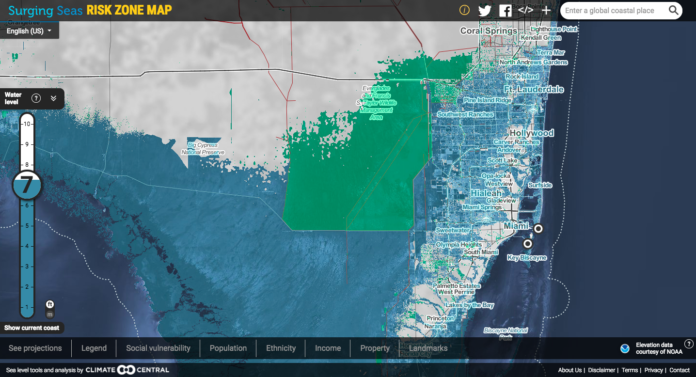This is Scott Amyx with today’s Climate Change Flash Briefing.
Do you live in Florida or have a vacation home? In a few years you might find yourself literally under water. More than half the population of 100 Florida cities live within 4 feet of the local high tide line.
Global warming has raised global sea level about 8 inches since 1880, and the rate of rise is accelerating. Across the country, nearly 5 million people live in homes at less than 4 feet above high tide. Between the Intergovernmental Panel on Climate Change, the United Nations and the National Oceanic and Atmospheric Administration, sea level is estimated to rise between three to seven feet by 2050. According to Harold Wanless, the Chair of the Geology Department at the University of Miami, the rate of sea level rise is currently doubling every seven years, and “that we have to take seriously the possibility that we could have 15 feet by then.”
So what can be done? One mitigation is to protect marshlands. Florida has more wetlands than any other state. Florida’s marshlands are in danger from invasive grasses and from invasive rodents called nutria. Wetlands are highly valuable because they absorb flood water, help reduce the impact of coastal storms by absorbing wave energy, filter out pollution and provide habitat for wildlife. And for salt marshes to persist despite rising waters, they must grow at a rate equal to or greater than the rate of sea level rise.
Florida Governor Rick Scott recognizes the real danger of rising sea level to the very existence of Florida. That’s why he and his environmental regulators are trying to protect lands within marsh migration corridors so wetlands have places for the marshes to migrate into the future.
Stay tuned next time to find out what you can do to help on International Polar Bear Day.


















